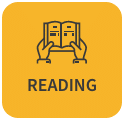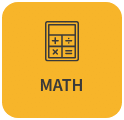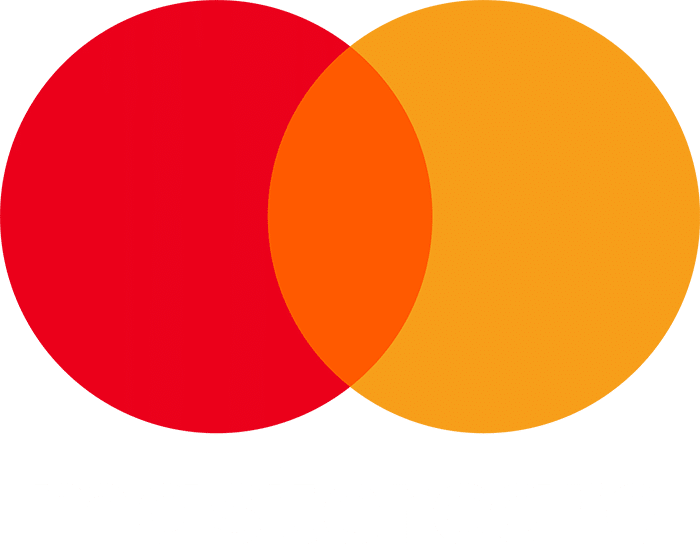- Ontario:
- Math
- Language Arts
- Social Studies
- Science
Ontario
Skills available for Ontario Grade 1 Math Curriculum (2020)
Expectations are in black and skills are in blue. Click on the name of the skill to practice that skill.
Please check back as we are always adding more content!
1.B Number
1.B1 Number Sense
Whole Numbers
1.B1.1 read and represent whole numbers up to and including 50, and describe various ways they are used in everyday life
1.B1.2 compose and decompose whole numbers up to and including 50, using a variety of tools and strategies, in various contexts
1.B1.3 compare and order whole numbers up to and including 50, in various contexts
Digital Resources
Printable Worksheets
• Comparing Numbers from 1 to 10: Activity 1
• Comparing Numbers from 1 to 10: Activity 2
1.B1.4 estimate the number of objects in collections of up to 50, and verify their estimates by counting
1.B1.5 count to 50 by 1s, 2s, 5s, and 10s, using a variety of tools and strategies
Digital Resources
Printable Worksheets
Fractions
1.B1.6 use drawings to represent and solve fair-share problems that involve 2 and 4 sharers, respectively, and have remainders of 1 or 2
Digital Resources
Printable Worksheets
• Exploring Fair Sharing – Activity 1
• Exploring Fair Sharing – Activity 2
• Exploring Fair Sharing with Leftovers: Activity 1
• Exploring Fair Sharing with Leftovers: Activity 2
• Exploring Equal Parts: Halves – Activity 1
• Exploring Equal Parts: Fourths – Activity 1
• Sharing Cookies – Equal Amounts
• Exploring Equal Parts – At the Beach
• Sharing Strawberries – Equal Amounts
• Sharing Cupcakes – Equal Amounts
• Sharing Berries – Equal Amounts
• Sharing Apples – Equal Amounts
1.B1.7 recognize that one half and two fourths of the same whole are equal, in fair-sharing contexts
Digital Resources
Printable Worksheets
• Exploring Equal Parts: Halves – Activity 2
1.B1.8 use drawings to compare and order unit fractions representing the individual portions that result when a whole is shared by different numbers of sharers, up to a maximum of 10
Digital Resources
Printable Worksheets
1.B2 Operations
Properties and Relationships
1.B2.1 use the properties of addition and subtraction, and the relationship between addition and subtraction, to solve problems and check calculations
Digital Resources
Printable Worksheets
• Turn Around Addition Strategy
• Counting Doubles Addition Strategy
• Doubles Plus One Addition Strategy
• Draw a Picture Addition Strategy
• Addition Word Problems – Activity 1
• Addition Word Problems – Activity 2
• Minus Zero Subtraction Strategy
• Counting Back Subtraction Strategy
• Using a Number Line to Subtract
• A Number Minus Itself Subtraction Strategy
• Doubles Subtraction Strategy
• Draw a Picture Subtraction Strategy
Math Facts
1.B2.2 recall and demonstrate addition facts for numbers up to 10, and related subtraction facts
Digital Resources
Printable Worksheets
• Subtracting Numbers from 0 to 10
• Addition Facts for 2, 3, 4, and 5
• Addition Facts for 6, 7, 8, and 9
• Math Riddle – Addition Facts to 10
• Subtraction Facts for 0, 1, or 2
• Subtraction Facts for 3, 4 ,or 5
• Subtraction Facts from 0 to 5
• Subtracting from Zero to Five
Mental Math
1.B2.3 use mental math strategies, including estimation, to add and subtract whole numbers that add up to no more than 20, and explain the strategies used
Digital Resources
Printable Worksheets
• Adding 1 or 2 by Counting On
• Addition Practice – Sums from 11 to 20
• Math Riddle – Addition Facts to 20
• Missing Numbers – Sums to 20
• Subtraction Facts from 0 to 20
• Subtraction Practice- Differences from 11 to 15
• Subtraction Practice- Differences from 11 to 20
• Subtraction Practice- Differences from 16 to 20
• Math Riddle – Subtraction Facts from 0 to 12
• Math Riddle – Subtraction Facts from 0 to 20
Addition and Subtraction
1.B2.4 use objects, diagrams, and equations to represent, describe, and solve situations involving addition and subtraction of whole numbers that add up to no more than 50
Digital Resources
Printable Worksheets
• Numbers Can Be Added in Any Order – Set 1
• Numbers Can Be Added in Any Order – Set 2
• Addition Practice – Sums to 10
• How Many Ways Can You Make 10
• Use a Number Line to Subtract
• Use a Number Line to Subtract
• How Many Way Can You Subtract from Ten
Multiplication and Divsion
1.B2.5 represent and solve equal-group problems where the total number of items is no more than 10, including problems in which each group is a half, using tools and drawings
1.C Algebra
1.C1 Patterns and Relationships
Patterns
C1.1 identify and describe the regularities in a variety of patterns, including patterns found in real-life contexts
Digital Resources
Printable Worksheets
• Patterns Are All Around Us! – Activity 1
C1.2 create and translate patterns using movements, sounds, objects, shapes, letters, and numbers
Digital Resources
Printable Worksheets
C1.3 determine pattern rules and use them to extend patterns, make and justify predictions, and identify missing elements in patterns
Digital Resources
Printable Worksheets
• Extend the Pattern – Activity 1
• Extend the Pattern – Activity 2
• How Does the Pattern Attribute Change? – Activity 1
• How Does the Pattern Attribute Change? – Activity 2
• Identifying and Describing Patterns
• Complete the Pattern – Activity 1
C1.4 create and describe patterns to illustrate relationships among whole numbers up to 50
1.C2 Equations and Inequalities
Variables
C2.1 identify quantities that can change and quantities that always remain the same in real-life contexts
Equalities and Inequalities
C2.2 determine whether given pairs of addition and subtraction expressions are equivalent or not
C2.3 identify and use equivalent relationships for whole numbers up to 50, in various contexts
1.C3 Coding
Coding Skills
C3.1 solve problems and create computational representations of mathematical situations by writing and executing code, including code that involves sequential events
Digital Resources
Printable Worksheets
• Exploring Writing Code – G1 Set 1
• Exploring Writing Code – G1 Set 2
• Exploring Writing Code – G1 Set 3
• Exploring Writing Code – G1 Set 4
• Exploring Drawing Code – G1 Set 1
• Exploring Drawing Code – G1 Set 2
• Exploring Drawing Code – G1 Set 3
C3.2 read and alter existing code, including code that involves sequential events, and describe how changes to the code affect the outcomes
Digital Resources
Printable Worksheets
1.D Data
1.D1 Data Literacy
Data Collection and Organization
D1.1 sort sets of data about people or things according to one attribute, and describe rules used for sorting
Digital Resources
Printable Worksheets
• Sorting Objects – Activity 1
• Sorting Objects – Activity 2
D1.2 collect data through observations, experiments, and interviews to answer questions of interest that focus on a single piece of information; record the data using methods of their choice; and organize the data in tally tables
Digital Resources
Printable Worksheets
Data Visualization
D1.3 display sets of data, using one-to-one correspondence, in concrete graphs and pictographs with proper sources, titles, and labels
Digital Resources
Printable Worksheets
• Make A Tally Chart – Activity 1
• Make A Tally Chart – Activity 2
• Exploring Bar Graphs – Activity 1
• Exploring Bar Graphs – Activity 2
• Exploring Bar Graphs – Activity 3
• Exploring Bar Graphs – Activity 4
• Exploring Bar Graphs – Activity 5
Data Analysis
D1.4 order categories of data from greatest to least frequency for various data sets displayed in tally tables, concrete graphs, and pictographs
D1.5 analyse different sets of data presented in various ways, including in tally tables, concrete graphs, and pictographs, by asking and answering questions about the data and drawing conclusions, then make convincing arguments and informed decisions
Digital Resources
Printable Worksheets
• Exploring Tally Charts – Activity 1
• Exploring Tally Charts – Activity 2
• Exploring Pictographs – Activity 1
• Exploring Pictographs – Activity 2
• Exploring Bar Graphs – Activity 1
• Exploring Bar Graphs – Activity 2
• Exploring Bar Graphs – Activity 3
• Exploring Bar Graphs – Activity 4
• Reading Venn Diagrams – Activity 1
• Reading Venn Diagrams – Activity 2
• Reading Venn Diagrams – Activity 3
• Reading Tally Charts – Activity 1
• Reading Tally Charts – Activity 2
• Reading Bar Graphs – Activity 1
• Reading Bar Graphs – Activity 2
• Reading Bar Graphs – Activity 3
• Reading Bar Graphs – Activity 4
• Reading Bar Graphs – Activity 5
• Reading Bar Graphs – Activity 6
• Reading Bar Graphs – Activity 7
• Reading Bar Graphs – Activity 8
1.D2 Probability
Probability
D2.1 use mathematical language, including the terms “impossible”, “possible”, and “certain”, to describe the likelihood of events happening, and use that likelihood to make predictions and informed decisions
Digital Resources
Printable Worksheets
• Exploring Probability – Activity 1
D2.2 make and test predictions about the likelihood that the categories in a data set from one population will have the same frequencies in data collected from a different population of the same size
1.E Spatial Sense
1.E1 Geometric and Spatial Reasoning
Geometric Reasoning
E1.1 sort three-dimensional objects and two-dimensional shapes according to one attribute at a time, and identify the sorting rule being used
Digital Resources
Printable Worksheets
E1.2 construct three-dimensional objects, and identify two-dimensional shapes contained within structures and objects
Digital Resources
Printable Worksheets
E1.3 construct and describe two-dimensional shapes and three-dimensional objects that have matching halves
Location and Movement
E1.4 describe the relative locations of objects or people, using positional language
Digital Resources
• Positional Language: On and Under
• Positional Language: Above and Below
• Positional Language: Beside and Next to
• Positional Language: In Front of and Behind
• Positional Language: Left, Middle, and Right
Printable Worksheets
• Exploring Positional Words – Activity 1
• Exploring Positional Words – Activity 2
• Positional Words: Follow the Instructions
• Finding The Location on a Grid
• Matching Positional Words to Pictures – Activity 1
• Matching Positional Words to Pictures – Activity 2
• Positional Language – Activity 1
E1.5 give and follow directions for moving from one location to another
Digital Resources
• Locations and Movements of Objects
Printable Worksheets
• Exploring Location and Movement
5.E2 Measurement
Attributes
E2.1 identify measurable attributes of two-dimensional shapes and three-dimensional objects, including length, area, mass, capacity, and angle
Digital Resources
• Attributes of Shapes and Objects
Printable Worksheets
• Exploring Attributes: Comparing Length
• Exploring Attributes: Comparing Height
E2.2 compare several everyday objects and order them according to length, area, mass, and capacity
Digital Resources
• Compare Size, Mass, and Capacity
Printable Worksheets
• Exploring Measurement: Non-Standard Units – Set 1
• Exploring Measurement: Non-Standard Units – Set 2
Time
E2.3 read the date on a calendar, and use a calendar to identify days, weeks, months, holidays, and seasons
Digital Resources
Printable Worksheets
• Telling Time to the Hour – Set 1
• Telling Time to the Hour – Set 2
• Telling Time to the Hour – Set 3
• Telling Time to the Half Hour – Set 1
• Telling Time to the Half Hour – Set 2
• Telling Time to the Half Hour – Set 3
• Telling Time to the Half Hour – Set 4
• Showing the Time to the Hour
• Telling Time – The Minute Hand
1.F Financial Literacy
1.F1 Money and Finances
Money Concepts
F1.1 identify the various Canadian coins up to 50¢ and coins and bills up to $50, and compare their values
Digital Resources
• Comparing Canadian Coins and Bills
• Final Review – Canadian Bills
Printable Worksheets
• At the School Cafeteria – Set 1
• At the School Cafeteria – Set 2
• At the School Cafeteria – Set 3
• Getting to Know Coins – Set 1
• Getting to Know Coins – Set 2
• Getting to Know Coins – Set 3
• Getting to Know Coins – Set 4









